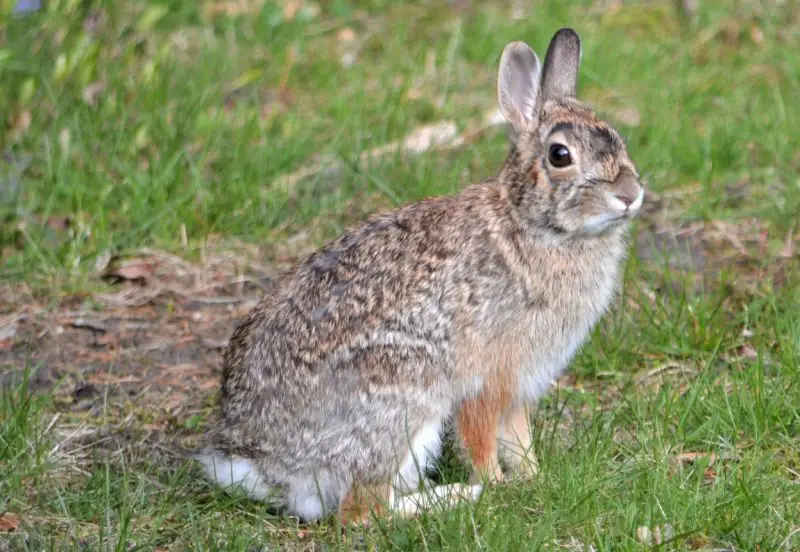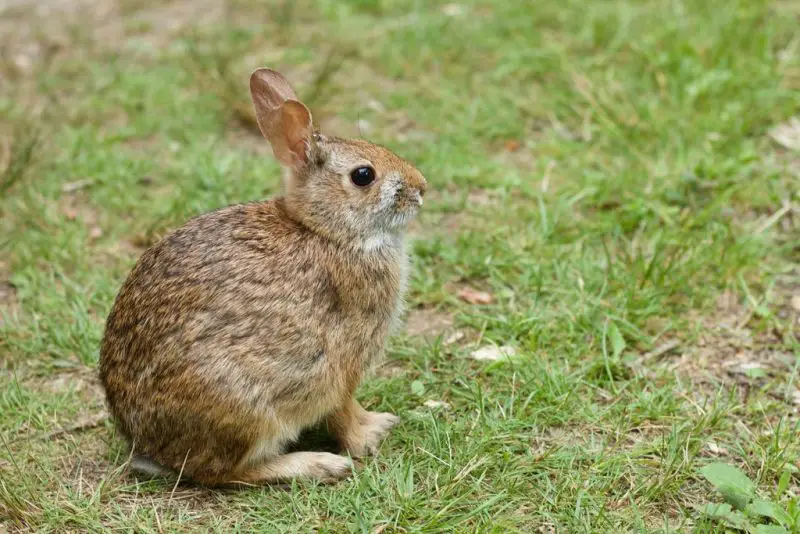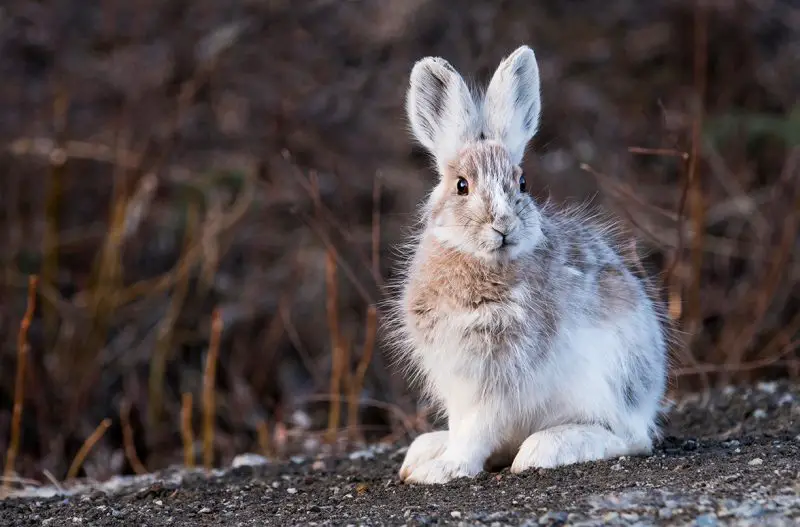If you look closely across Michigan, wild rabbits and hares can be found thriving in different habitats. From the forests of the Upper Peninsula to suburban backyards, wild rabbits are a familiar sight. Understanding the types of rabbits in Michigan is essential for wildlife enthusiasts, gardeners, and photographers looking to identify them in their natural habitats. This guide explores three key species of wild rabbits found in Michigan, offering detailed information on their characteristics, habitats, and identification tips.
Rabbits play an important role in Michigan’s ecosystems. They are prey for many predators, including foxes, hawks, and owls, and they also contribute to seed dispersal for various plants. While they are often seen as common and familiar animals, identifying the differences between species requires attention to their size, coloration, and behavior.
This article provides a comprehensive look at the three most common wild rabbit species in Michigan. By the end, you will be able to distinguish these rabbits, understand their preferred habitats, and appreciate their unique behaviors.
Types of Wild Rabbits Found in Michigan
Eastern Cottontail (Sylvilagus floridanus)

The Eastern Cottontail is the most common rabbit species in Michigan. Easily recognized by its characteristic white, fluffy tail, this rabbit thrives in a variety of habitats, including fields, meadows, farmlands, and suburban areas. Adult Eastern Cottontails typically measure 14 to 18 inches in length and weigh between 2 to 4 pounds. Their fur is usually reddish-brown with grayish undersides, providing excellent camouflage among grasses and shrubs.
Eastern Cottontails are mostly active during dawn and dusk, making them crepuscular creatures. They feed primarily on grasses, clover, and herbaceous plants but will also eat bark, twigs, and garden vegetables when available. Their reproduction rate is high; females can produce multiple litters per year, each consisting of three to eight kits.
One key identification feature is the Eastern Cottontail’s tail, which appears as a small, bright white puff when the rabbit hops away. Their ears are shorter than those of hares, measuring about 2 to 3 inches, and they have a rounded, compact body shape. Observing the shape of their droppings, which are small and round, can also help in confirming their presence in a given area.
In Michigan, Eastern Cottontails are widespread, found in southern and central parts of the state as well as in urban parks. They are highly adaptable, often living close to humans, and their population is stable due to their resilience and reproductive capacity. Photographers often capture them in gardens and open fields, where the rabbits’ alert posture and twitching nose make for distinctive images.
New England Cottontail (Sylvilagus transitionalis)

The New England Cottontail is less common in Michigan and has been the focus of conservation efforts due to its declining population. This species prefers dense, shrubby habitats such as brushy fields, forest edges, and overgrown thickets. New England Cottontails are similar in size to Eastern Cottontails but have slightly darker, more grayish-brown fur and a less vibrant white tail.
These rabbits are more secretive and difficult to observe in the wild. They rely on thick cover for protection from predators and are less likely to venture into open fields compared to their Eastern counterparts. Their diet consists of woody plants, buds, and leaves, particularly in winter when herbaceous food is scarce.
Identification of New England Cottontails requires careful observation. While they are often confused with Eastern Cottontails, subtle differences in coloration, ear size, and tail visibility can help distinguish them. Genetic testing is sometimes used by wildlife biologists to confirm species when visual identification is challenging. Tracks can also offer clues, as New England Cottontails leave similar but slightly more compact footprints than Eastern Cottontails.
In Michigan, the New England Cottontail is primarily found in the southern Lower Peninsula, especially in areas with regenerating forests or abandoned farmland. Conservation programs aim to restore suitable habitats and encourage population growth. For wildlife watchers, spotting this rabbit is rare but rewarding, as it represents one of the state’s native species struggling to maintain its foothold in a landscape dominated by human activity.
Snowshoe Hare (Lepus americanus)

The Snowshoe Hare is another species found in Michigan, particularly in the northern forests and colder regions. Unlike cottontails, Snowshoe Hares are true hares and have longer legs, larger hind feet, and a more elongated body adapted for snow-covered environments. Their seasonal fur changes from brown in summer to white in winter, providing effective camouflage against predators. Adults typically measure 15 to 20 inches in length and weigh between 2.5 to 4.5 pounds.
Snowshoe Hares are primarily nocturnal, though they can be active at dawn and dusk. They feed on a wide variety of vegetation, including twigs, bark, buds, and leafy plants. During winter, they rely heavily on woody shrubs and young trees to sustain their energy needs. Their large hind feet act as natural snowshoes, allowing them to move quickly across deep snow and escape predators such as lynx, foxes, and owls.
Identifying a Snowshoe Hare is straightforward if you observe their distinct seasonal coat and large feet. Their white winter fur is a key distinguishing feature from other Michigan rabbits. Tracks in snow are another telltale sign, as the large hind feet create elongated prints that are noticeably larger than those of cottontails. Unlike cottontails, hares do not build burrows but create shallow depressions called forms to rest and hide in dense cover.
Snowshoe Hares are mostly found in the Upper Peninsula and northern Lower Peninsula of Michigan, favoring boreal forests and mixed woodlands. Their populations fluctuate with predator-prey cycles, and they are more commonly observed in winter due to their snow-adapted behavior. Photographers often capture them in their winter white coats, blending seamlessly into the snowy landscape.
Habitat and Behavior of Wild Rabbits in Michigan
Wild rabbits in Michigan occupy diverse habitats ranging from urban areas to dense forests. Eastern Cottontails are adaptable and frequently seen in suburban neighborhoods, while New England Cottontails prefer thick brush and shrubby environments. Snowshoe Hares dominate the northern, colder forests where snow cover is common. Understanding these habitat preferences is crucial for identifying and observing wild rabbits.
Behaviorally, cottontails are more social and adaptable to human presence, often feeding in gardens and open fields. Hares, in contrast, are more solitary and rely on speed and camouflage to evade predators. All species exhibit high reproductive potential, though their survival depends heavily on available cover and food resources. Seasonal behaviors, such as the Snowshoe Hare’s winter coat change, highlight the adaptations these animals have developed to thrive in Michigan’s varying climates.
Rabbits also influence their ecosystems by serving as prey and helping disperse seeds. Their burrowing and foraging behaviors contribute to soil aeration and plant propagation. Recognizing their tracks, droppings, and feeding signs can provide valuable insights into their presence and activity patterns.
Avoiding Conflicts with Wild Rabbits
While wild rabbits are generally harmless, they can become pests in gardens and landscaping areas. To avoid conflicts, gardeners should consider protective measures such as fencing, repellents, and habitat modification. Planting rabbit-resistant species and removing brush piles near gardens can reduce the likelihood of damage.
Observing rabbits without disturbing them is the best approach for wildlife enthusiasts. Using binoculars, maintaining a safe distance, and avoiding sudden movements ensures that the rabbits remain calm and natural behaviors are not disrupted. Understanding their nocturnal and crepuscular activity patterns can also help minimize encounters in populated areas.
Conclusion
Michigan hosts three fascinating wild rabbit species: the adaptable Eastern Cottontail, the secretive New England Cottontail, and the snow-adapted Snowshoe Hare. Each species exhibits unique behaviors, habitat preferences, and physical characteristics, providing wildlife enthusiasts with opportunities to observe and appreciate these remarkable animals. By learning to identify and understand these rabbits, residents and visitors can enjoy Michigan’s wildlife while respecting its natural balance.
FAQs About Wild Rabbits in Michigan
What types of wild rabbits are most common in Michigan?
The most common species are Eastern Cottontail, New England Cottontail, and Snowshoe Hare. Eastern Cottontails are widespread, while New England Cottontails are rarer. Snowshoe Hares are primarily found in northern forests.
How can I tell the difference between Eastern and New England Cottontails?
Eastern Cottontails have reddish-brown fur and a bright white tail, whereas New England Cottontails have darker grayish-brown fur and a less visible white tail. Habitat and behavior can also help distinguish them.
Where are Snowshoe Hares found in Michigan?
Snowshoe Hares inhabit the Upper Peninsula and northern Lower Peninsula, favoring boreal forests, mixed woodlands, and areas with deep snow cover.
Are wild rabbits harmful to gardens?
They can eat young plants and vegetables. Protect gardens with fencing, repellents, and planting rabbit-resistant species to minimize damage.
When is the best time to observe wild rabbits?
Most rabbits are crepuscular, active at dawn and dusk. Snowshoe Hares are often more visible in winter due to their white coats against snow.






